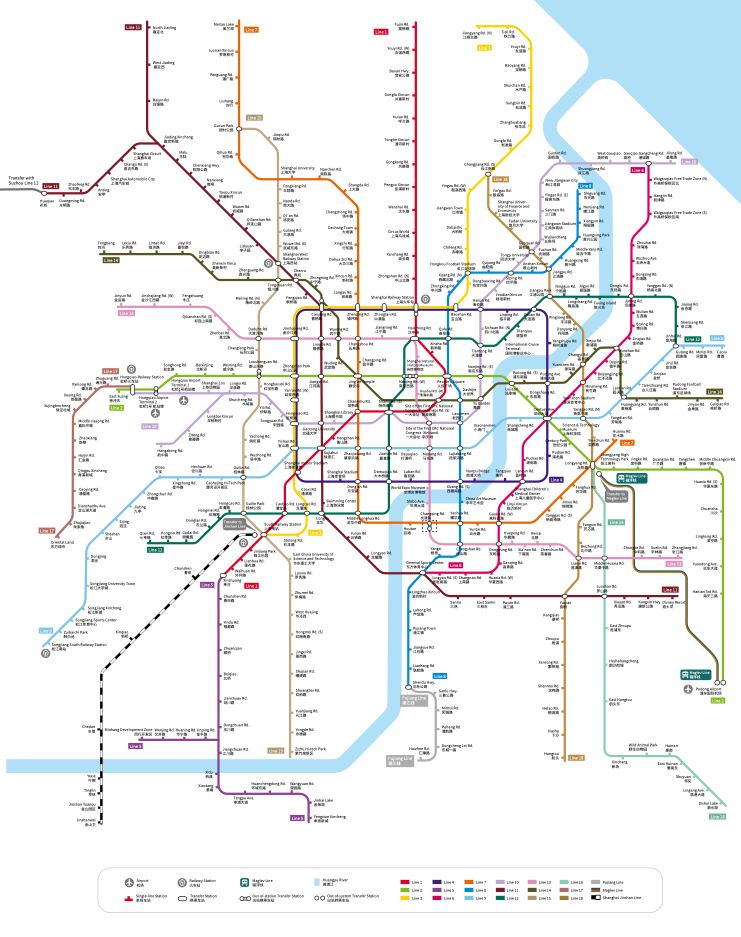A Comprehensive Guide to Traveling by Train in Shanghai
Shanghai, a bustling metropolis with a blend of modern and traditional Chinese elements, offers an extensive and efficient train network that is an excellent option for travelers. Whether you're exploring the city or venturing to nearby towns and regions, understanding Shanghai's train system can enhance your travel experience. Here’s a detailed guide to help first-time travelers navigate the train network in Shanghai.
Types of Train Services in Shanghai
Shanghai Metro: The city's subway system is one of the largest in the world, with over 20 lines that connect various districts and suburbs. It's the quickest way to get around the city, avoiding road traffic.
Maglev Train: The Magnetic Levitation train is a must-try experience in Shanghai, connecting Shanghai Pudong International Airport with Longyang Road Metro Station in just eight minutes, reaching speeds up to 431 km/h (268 mph).
Shanghai Railway Stations: Shanghai has several major railway stations that serve high-speed trains (D and G class) and regular trains. Key stations include Shanghai Railway Station, Shanghai South Railway Station, and Shanghai Hongqiao Railway Station, connecting to other major cities in China.
Navigating the Shanghai Metro
Buying Tickets: Tickets can be purchased at vending machines and ticket counters at every metro station. Machines have an English option. You can buy single-journey tickets or recharge a Shanghai Public Transport Card.
Payment Options: Besides cash and local debit cards, you can use mobile payment platforms like Alipay and WeChat Pay. The Shanghai Metro also supports QR code entry, which can be generated through the Metro Daduhui app.
Operating Hours: Most metro lines operate from around 5:30 AM to 11:00 PM. Timings can vary slightly depending on the line and station, so it's advisable to check specific times in advance.
Navigating the Lines: Metro maps are available in both Chinese and English. Signs inside stations and trains are also bilingual, making it easier for international travelers to navigate.
Tips for Using Shanghai’s Trains
Peak Hours: Like any major city, Shanghai's metro can get crowded during peak hours (7:00-9:00 AM and 5:00-7:00 PM on weekdays). If possible, plan your travel outside these times for a more comfortable journey.
Safety: Keep an eye on your belongings, especially in crowded stations and trains. The metro is generally safe, but it’s wise to be cautious.
Accessibility: Most metro stations are equipped with elevators and ramps, making them accessible for travelers with mobility issues.
Exploring Nearby Cities: High-speed trains from Shanghai can take you to neighboring cities like Hangzhou, Suzhou, and Nanjing quickly. Consider the Shanghai Hongqiao station for these trains, as it serves as the main hub for high-speed rail in the region.
Cultural Insights
Queueing: Always queue up for trains and allow passengers to alight before boarding. This courtesy is strictly followed in Shanghai and most parts of China.
Local Interaction: While traveling, you might notice that locals are immersed in their phones, often watching videos or playing games without sound. It's a common sight and part of the local commuting culture.
Language: Learning a few basic Mandarin phrases like "Nǐ hǎo" (hello) and "Xièxiè" (thank you) can be helpful. However, metro signs and announcements are also in English.
Emergency Information
Helplines: Keep note of emergency numbers such as 110 for police, 120 for ambulance, and 119 for fire.
Lost & Found: If you lose something on the train or at a station, head to the nearest staffed service counter or contact the Shanghai Metro’s official customer service.
Navigating the train system in Shanghai can be a thrilling part of your travel adventure, offering a glimpse into the daily life of locals while providing a reliable and efficient means to explore this dynamic city. Whether it’s your first time in Shanghai or you're revisiting, the trains offer a window into the city’s fast-paced, yet orderly lifestyle.
